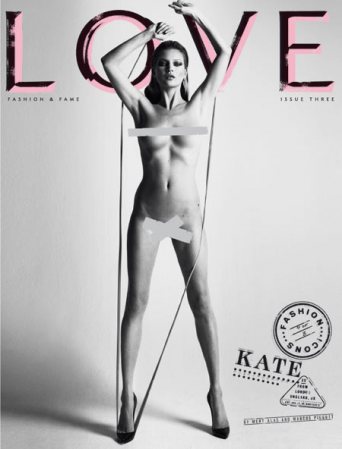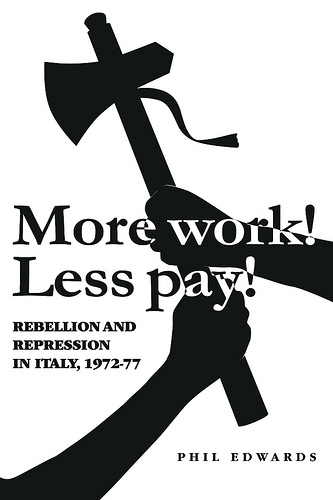I’ve just finished a paper. I never have much trouble writing, once I get going; my problem is always that I try to get the kitchen sink in, while also being vaguely provocative and gnomic in the manner of Debord or Garfinkel or Nils Christie. So I spend far too long reading all round the subject, then wear myself out trying to fit it all together, then produce something everyone thinks is a bit off to one side of what they were expecting.
Anyway, here’s the bibliography, which I compiled over a happy (if dull) couple of hours this afternoon, listening to Robyn Hitchcock’s album Luxor (and especially its mysteriously euphoric last track, “Solpadeine”). Question for anyone who recognises more than a couple of those names: what discipline am I in? (It’s not a guessing game, I’m genuinely curious.)
Ashworth, A. (2000), “Is the criminal law a lost cause?”, Law Quarterly Review 116
Ashworth, A. (2006), “Four threats to the presumption of innocence”, International Journal of Evidence & Proof 10(4)
Ashworth, A. and Zedner, L. (2008), “Defending the criminal law: Reflections on the changing character of crime, procedure, and sanctions”, Criminal Law and Philosophy 2(1)
Ayres, I. and Braithwaite, J. (1992), Responsive regulation: transcending the deregulation debate, Oxford: OUP
Babcock, B. (1982), “Fair play: Evidence favorable to an accused and effective assistance of counsel”, Stanford Law Review 34(6)
Baldwin, R. (2004), “The new punitive regulation”, Modern Law Review 67(3)
Bates, E. (2009), “Anti-terrorism control orders: Liberty and security still in the balance”, Legal Studies 29(1)
Benjamin, W. (tr. Edmund Jephcott) (1986 (1921)), “Critique of violence”, in Benjamin, W., Reflections, New York: Schocken
Black, J. (2002), “Critical reflections on regulation”, Australian Journal of Legal Philosophy 27(1)
Black, J. (2004), “Law and regulation: The case of finance”, in Parker, Scott, Lacey and Braithwaite 2004
Blake, M. and Ashworth, A. (1996), “The presumption of innocence in English criminal law”, Criminal Law Review
Bottoms, A. (2003), “Some sociological reflections on restorative justice”, in von Hirsch, A., Roberts, J., Bottoms, A., Roach, K. and Schiff, M. (eds.), Restorative justice and criminal justice: Competing or reconcilable paradigms?, Oxford: Hart
Braithwaite, J. (1982), “Challenging just deserts: Punishing white-collar criminals”, Journal of Criminal Law and Criminology 73(2)
Braithwaite, J. (1989), Crime, shame and reintegration, Cambridge: CUP
Braithwaite, J. (1997), “On speaking softly and carrying big sticks: Neglected dimensions of a republican separation of powers”, University of Toronto Law Journal, 47(3)
Braithwaite, J. (2002), Restorative justice and responsive regulation, Oxford: OUP
Braithwaite, J. (2005), “Pre-empting terrorism”, Current issues in criminal justice 17(1)
Cane, P. (2002), “Tort law as regulation”, Common Law World Review 31(4)
Carson, W. (1970), “White-collar crime and the enforcement of factory legislation”, British Journal of Criminology 10(4)
Christie, N. (1977), “Conflicts as property”, British Journal of Criminology 17(1)
Coffee, J. (1991), “Does ‘unlawful’ mean ‘criminal’?: Reflections on the disappearing tort/crime distinction in American law”, Boston University Law Review 71(2)
Cooter, R. (1984), “Prices and Sanctions”, Columbia Law Review 84(6)
Crawford, A. and Newburn, T. (2002), “Recent developments in restorative justice for young people in England and Wales: Community participation and representation”, British Journal of Criminology 42(3)
Cruft, R. (2008), “Liberalism and the changing character of the criminal law: Response to Ashworth and Zedner”, Criminal Law and Philosophy 2(1)
Flint, J. and Nixon, J. (2006), “Governing neighbours: Anti-social behaviour orders and new forms of regulating conduct in the UK”, Urban Studies 43(5-6)
Garfinkel, H. (1956), “Conditions of successful degradation ceremonies”, American Journal of Sociology 61(5)
Hood, C., Rothstein, H., and Baldwin, R. (2001), The government of risk, Oxford: OUP
Hoyle, C., Young, R. and Hill, R. (2002), Proceed with caution: An evaluation of the Thames Valley Police initiative in restorative cautioning, York: Joseph Rowntree Foundation
Kamenka, E. and Tay, A. (1975), “Beyond bourgeois individualism: The contemporary crisis in law and legal ideology”, in Kamenka, E. and Neale, R. (eds.), Feudalism, capitalism and beyond, London: Edward Arnold
Kamenka, E. and Tay, A. (1986), “The traditions of justice”, Law and philosophy 5(3)
Lacey, N. (2004), “Criminalization as regulation: The role of criminal law”, in Parker, Scott, Lacey and Braithwaite 2004
Loader, I. (2006), “Policing, recognition, and belonging”, ANNALS of the American Academy of Political and Social Science 605(1)
Parker, C., Scott, C., Lacey, N. and Braithwaite, J. (eds.) (2004), Regulating Law, Oxford: OUP
Pashukanis, E. (1924), “The general theory of law and Marxism”, in Beirne, P. and Sharlet, R. (eds.) (1980), Pashukanis: Selected writings on Marxism and law, London: Academic Press
Paulus, I. (1977), “Strict liability: Its place in public welfare offences”, Criminal Law Quarterly 20(4)
Pavlich, G. (1996), “The power of community mediation: Government and formation of self‑identity”, Law and Society Review 30(4)
Pavlich, G. (2005), Governing paradoxes of restorative justice, London: GlassHouse
Shapland, J., Atkinson, A., Atkinson, H., Colledge, E., Dignan, J., Howes, M., Johnstone, J., Robinson, G. and Sorsby, A. (2006), “Situating restorative justice within criminal justice”, Theoretical Criminology 10(4)
Sherman, L. (1990), “Police crackdowns: Initial and residual deterrence”, Crime and Justice 12(2)
Simmonds, N. (2005), “Jurisprudence as a moral and historical inquiry”, Canadian Journal of Law and Jurisprudence 18(2)
Simmonds, N. (2007), Law as a moral idea, Oxford: OUP
Stapleton, J. (2004), “Regulating torts”, in Parker, Scott, Lacey and Braithwaite 2004
Van den Haag, E. (1982), “The criminal law as a threat system”, Journal of Criminal Law and Criminology 73(2)
Von Hirsch, A. (1990), “Proportionality in the philosophy of punishment: From ‘why punish?’ to ‘how much?’”, Criminal Law Forum 1(2)
Von Hirsch, A. and Ashworth, A. (1992), “Not not just deserts: A response to Braithwaite and Pettit”, Oxford Journal of Legal Studies 12(1)
Waldron, J. (2008), “The concept and the rule of law”, Georgia Law Review 43(1)
Young, R. (2000), “Just cops doing ‘shameful’ business?: Police-led restorative justice and the lessons of research”, in Morris, A. and Maxwell, G. (eds.) Restorative justice for juveniles: Conferencing, mediation and circles, Oxford: Hart
Young, R. (2001), “Integrating a multi-victim perspective into criminal justice through restorative justice conferences”, in Crawford, A. and Goodey, J., Integrating a Victim Perspective within Criminal Justice, Dartmouth: Ashgate
Criminology or legal theory, Rob suggests in comments. Yes, but that’s exactly the problem – which is it to be? I’m addressing regulation (hence all the Braithwaite) from a standpoint within criminology, but making a case which leans rather hard on legal theorists (Ashworth, Simmonds) & work close to them (von Hirsch), while remaining ultimately within the phenomenological tradition in sociology (Garfinkel). (Sounds good – but what does it actually sound like?) I’m in danger of falling between every stool there is. I’m sure there’s a journal somewhere which will lap this kind of thing up, but I haven’t identified it yet.
Last night I didn’t dream an angel kissed me. I did, however, dream that I was walking round Manchester with Barack Obama. I wasn’t exactly showing him around – he knew exactly where he was going and frequently pointed things out to me, generally things like used needles and people begging. He was a nice bloke. We parted at the bottom of the High Street, with me heading to the bus station and him to his hotel; he invited me to go for dinner, but I said I ought to get back.
“Whether the subject sinks into madness, practises theory or participates in an uprising … the two poles of daily life – contact with a narrow and separate reality on one hand and spectacular contact with the totality on the other – are simultaneously abolished” (Voyer) Presumably life, music and dreams will all seem that much duller now that I’ve finished with the practice of theory. Note to self: write more papers.



